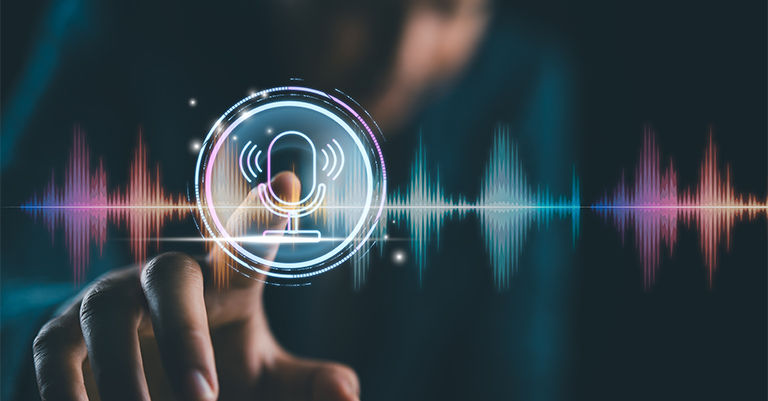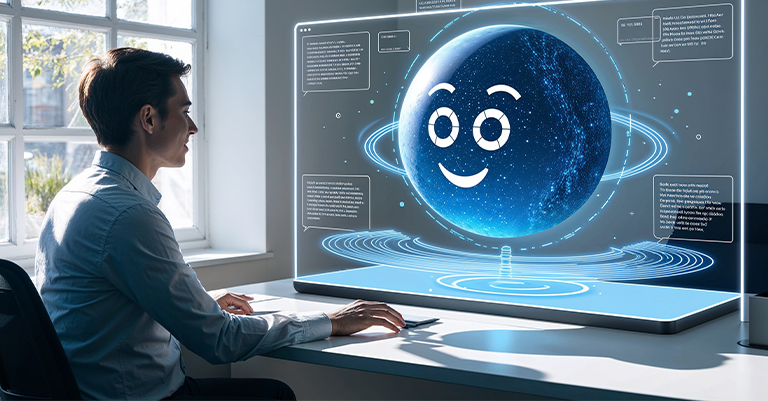How Speech Recognition Shapes Our Daily Lives
Every day, we talk to devices that understand us. Think of the times you’ve asked Siri a question, talked to Alexa, or used voice typing on your phone. This ability of machines to understand and respond to spoken words is called speech recognition.
Speech recognition turns our spoken words into digital commands. Devices hear what we say, break it down, and respond accordingly. But speech recognition is more than a neat trick; it’s a powerful tool changing how we live, work, and learn. Let’s dive into this fascinating world and explore how it works, where we use it, and why it’s so powerful.
How Does Speech Recognition Work?
Imagine speaking into a microphone. Your words create sound waves that travel into the device. Inside, advanced software records these waves and converts them into digital data. The device then breaks down this data to understand each sound, syllable, and word.
- Sound Analysis: First, the device captures sound. Each word is like a unique sound signature that the device “reads.”
- Language Processing: Once it has the sounds, the device compares them to its database of words and phrases. It uses language patterns to decide what you said.
- Response: After understanding your words, the device performs the command. This could be anything from playing a song to answering a question or even turning on lights.
Many devices use machine learning, which helps them get better over time. Each time we use speech recognition, it learns a bit more about our voices and speaking styles.
Everyday Examples of Speech Recognition

Speech recognition technology is everywhere. Here are a few examples of how it plays a role in our daily lives.
Smartphones: Voice Assistants and Voice Typing
Using Siri, Google Assistant, or Alexa involves the use of speech recognition. These helpers can complete a wide array of tasks—all with your voice.
Voice Typing lets you talk instead of typing with your fingers. It helps people quickly create long messages, emails, or notes in seconds, not minutes. This feature is popular with students and professionals who are short on time. This feature also benefits people with disabilities who find typing hard.
Smart Speakers: Home Automation and Smart Living
Smart speakers, like Amazon Echo and Google Nest, use speech recognition to control devices in your home. You can adjust lights, change the temperature, or play music—all with just your voice. This feature makes life easier, especially for people who are busy or have trouble moving around.
Gaming Consoles and Virtual Reality (VR)
Speech recognition in gaming lets players use their voice to control games. Gamers can switch levels, get hints, or chat with others, making gameplay smoother and more immersive.
In VR, speech recognition makes the experience feel more real. Players can interact with the virtual world by talking instead of clicking through menus, and the system responds quickly.
Cars: Voice Commands for Safer Driving
Most cars today allow drivers to make calls, get directions, or change music without looking away from the road. This feature boosts safety and makes driving more enjoyable.
Customer Service: Talking to Virtual Agents
Many companies use virtual agents to help customers on the phone. These agents use speech recognition to understand and answer simple questions. When you call to check your account balance or report an issue, you’re likely speaking to a virtual agent trained to understand what you say.
The Benefits of Speech Recognition Technology

Accessibility for Everyone
Speech recognition makes life easier for people with disabilities. People who can’t type can still send messages, make calls, or search the internet by speaking. It also helps people who struggle with reading or writing, giving them a way to use technology without those skills.
Convenience and Speed
Typing a long message can take a lot of time, but speaking is much quicker. Imagine just saying an essay or a message out loud. Speech recognition technology lets us finish tasks faster and with less work. It saves time, especially when we’re busy or need to do more than one thing at once.
Learning and Assistance
Speech recognition can help students learn new languages and improve reading skills. They can practice saying words, and the device will correct them. For people who learn best by listening, voice commands and feedback make learning easier and more engaging.
The Concerns and Risks of Speech Recognition
Speech recognition provides many benefits, but it also has some challenges. Here are a few things people worry about:
Privacy Risks
Devices with speech recognition need to listen to you. This causes some people to worry about their privacy. Many devices are “always listening.” This means they might pick up conversations even when you’re not talking to them. Companies state they protect this data. However, many people still worry their private conversations could be recorded or shared.
Mistakes and Misunderstandings
Speech recognition is still young. Sometimes it misunderstands what you say. This is especially true with accents or background noise. For example, if you say, “play my favorite song,” the device might play something else. Most of the time these mistakes are just annoying. However, they could even be harmful in serious situations.
Dependency on Technology
People might start relying too much on technology. If we always ask Alexa or Siri for help, we might forget how to do things on our own. This dependence could slowly weaken our problem-solving skills and independence.
How Speech Recognition Learns and Improves

Speech recognition technology improves the more people us it. When you correct a mistake, the device “learns” from it. The more it learns, the better it becomes at understanding different voices, accents, and languages.
Engineers use machine learning to train devices to get better at recognizing speech. They feed the devices with tons of data to “teach” them. Each time you use voice commands, you help the technology improve. This constant learning makes devices smarter and faster at understanding people.
The Future of Speech Recognition: What’s Next?
As speech recognition technology develops, we can expect more features. Here are some exciting possibilities:
Improved Accuracy and Language Understanding
Speech recognition is getting better at understanding complex language. This includes jokes, emotions, and sarcasm. Smart devices might respond in ways that feel more natural and personal in the near future.
Integration with More Devices
We could see speech recognition in more devices, not just phones and smart speakers. Imagine speaking to your refrigerator to add items to a shopping list or asking your microwave to cook your food at the perfect setting. Everyday objects could soon be controlled by voice.
Enhanced Security and Privacy Measures
Companies want to make our devices safer. They are creating better security tools like voice-activated passwords or personal recognition. Imagine a device that only listens to your voice. This would make our smart devices more secure and private.
Voice-Activated Health Monitoring
Healthcare could benefit from speech recognition too. Future devices might monitor your health by listening to changes in your voice. For example, a smart device could detect stress, fatigue, or even the early signs of illnesses, prompting you to get help when needed.
Should We Be Worried About the Power of Speech Recognition?
Speech recognition makes life easier and brings many new ideas. But it’s important to use it safely. Companies say they handle voice data with care, but it’s still smart to be careful. Here are a few tips to protect your privacy with voice-activated devices:
- Mute the Device: Turn off the microphone or mute the device when you’re not using it.
- Check Privacy Settings: Many devices let you control saved data. Look at these settings and choose what you’re comfortable with.
- Stay Informed: Technology changes quickly. Follow updates from trusted sources so you can keep your privacy safe.
As we use these devices, we can enjoy their benefits while staying aware of risks. Like any powerful tool, speech recognition is helpful when used carefully and responsibly.
Final Thoughts
Speech recognition has already changed our world. It helps people with disabilities and makes our homes smarter. As it grows, speech recognition will be even more important in daily life.
Next time you ask Siri a question or tell Alexa to turn off the lights, think about the amazing technology behind it. Speech recognition turns our voices into a way to control a smarter, more connected world. The future of voice technology is exciting and full of possibilities!





